Downhill mountain biking, known as the ‘Formula 1 of mountain biking,’ combines speed, skill, and precision. It started in the ’70s with modified bikes and has grown with new technology. This guide gives tips to boost your confidence and ride safely on tough trails.
Knowing how to position yourself and handle your bike is key. Look ahead 3-6 meters to plan for what’s coming. This keeps you safe. Also, wear protective gear like full-face helmets and knee pads to avoid injuries.
In this article, we cover bike setup and how to prepare physically. This aims to improve your downhill biking, especially in the UK. For more on starting downhill mountain biking, check out more here. Dive into this thrilling sport with the best tips!
The Essences of Downhill Mountain Biking
Downhill mountain biking began in the 1970s. It quickly became an exciting way to bike off-road. Available technology and safety steps have grown, making it more thrilling. More people now join competitions, with events increasing from 23 in 2000 to 474 in 2013.
At its core, downhill biking is about the thrill. Riders face steep and rough paths. They must have good riding techniques and be physically fit. A study linked skill and faster times, showing practice matters a lot.
Being mentally ready also affects how riders do in races. Feeling confident is key. But, they also need to wear helmets and body protection. This keeps the risky sport as safe as possible.
More and more people are getting into downhill mountain biking. Big events like the UCI Mountain Bike World Cup and the Red Bull Rampage help spread the word. This keeps the sport’s history alive. It encourages new riders to take on the challenge of steep hills.
Understanding Your Mountain Bike
Knowing your mountain bike well is key to performing best on trails. Picking the right bike and setting it up properly can change your downhill experience. It’s important to understand bike specs, strength, and necessary adjustments for better control and confidence on descents.
Choosing the Right Downhill Bike
Choosing a downhill bike involves several important factors for the best experience. A top downhill bike has strong build quality and great suspension for absorbing shocks on steep trails. Beginners should look for bikes that limit speed for safer descents. Bikes should be light yet durable, with hydraulic disc brakes for top control at high speeds.
Importance of Bike Setup and Adjustments
The setup of your bike is as crucial as the bike you choose. Adjusting tyre pressure, suspension, and handlebars greatly impacts performance. For example, the best tyre pressure for downhill is 35 psi front and 40 psi rear. Dropping tyre pressure by 5 psi improves grip and comfort on tough terrains.
Weight distribution is also vital for balance. Riders should learn to shift their weight according to the terrain. Keeping fork preload (sag) between 15% and 25% helps make rides smoother. Getting these adjustments right boosts confidence on rocky trails.
| Feature | Standard Specifications | Recommended Settings |
|---|---|---|
| Tyre Pressure (Front) | 35 psi | 30 psi for increased grip |
| Tyre Pressure (Rear) | 40 psi | 35 psi for a softer feel |
| Fork Preload (Sag) | 15% – 25% | Optimally tuned for smooth rides |
| Brake Type | Hydraulic Disc Brakes | For maximum control |
Mastering Your Riding Position
To get better at downhill mountain biking, the way you sit and move on your bike is key. Proper body position makes it easier to control the bike. It also makes you more aware of the trail and helps you focus. Knowing how to move your body on rough paths can make biking safer and more fun.
Optimal Body Positioning on the Bike
It’s important to keep the right posture for balance and control. You should keep around 40% of your body weight on the front tyres and 60% on the back. Your knees should be bent all the time. This stops you from being thrown forward over the handlebars. Here are some tips to help you get your body position right:
- Push your hips back to make your hamstrings tense. This helps spread your weight properly.
- Keep your shoulders low, which makes braking and turning corners easier.
- Having your elbows behind your hands makes you stronger and keeps your shoulders from getting hurt.
- Hold the handlebars firmly but gently. This keeps you balanced and ready to power through difficult spots.
Keeping Your Eyes on the Trail Ahead
Staying aware of the trail starts with how you look ahead. It’s important to look several feet in front of your bike. This stops you from focusing too much on what’s right in front of you. It also lets you see what’s coming up, so you can react faster. Here are some good strategies:
- Always try to look up to make better decisions on the trail.
- Use the “attack position,” where you lower your chest and bend your knees. This makes it easier to control the bike and feels more comfortable.
- When going downhill, keep your heels down. This balances your weight and helps you stay in control.
Using these tips when you ride can really improve how you do on downhill trails. Your rides will be safer and a lot more fun.
Essential Braking Techniques for Safety
Downhill mountain biking needs good brake control for safety and performance. Learning how to brake properly is crucial, especially on steep hills. This is where speed and balance matter a lot. Using the right braking strategies can greatly improve your downhill safety.
One-Finger Braking for Controlled Descents
One-finger braking is a technique used by pro riders. It saves energy and provides better bike control. By using one finger on the brake lever while going downhill, you prevent tiredness. It also keeps you well connected to your bike’s handlebars. Practising this will give you smoother and more controlled rides.
Modulating Brake Pressure to Prevent Overheating
It’s important to control your brakes to stop them from getting too hot. Too much heat can cause brake failure. Use your brakes smartly to lower the risk of overheating. On long descents, use the front brake more for better stop power. Before turns, gently apply both brakes. This makes your rides smoother and helps you handle tricky parts.
For deeper insight into downhill biking skills, check out mountain biking techniques. Or, learn essential tips for bikers of all levels at essential biking techniques.
| Technique | Benefits |
|---|---|
| One-Finger Braking | Improved control, reduced rider fatigue |
| Brake Modulation | Prevention of overheating, enhanced stability |
| Balanced Brake Use | Smoother rides, better traction on turns |
Downhill Mountain Biking Tips
Downhill mountain biking tests your riding skills and techniques. Learning to corner effectively improves speed and control on sharp turns. Stay low and lean into the turns for better downhill rides. This makes it easier to handle tough courses.
Practising Cornering Techniques Effectively
Mastering how to corner is key to staying stable on rides. Lean inward and press the outside pedal as you turn. This keeps up your momentum for smoother and quicker cornering. Stay relaxed to better handle the bike over different terrains.
Understanding the Dynamics of Riders and Bikes
Your ability to control the bike greatly depends on your movement. Flexibility helps manage the bike’s reaction to the track. Focus ahead on the trail to spot hazards early. Correct positioning, like keeping your hips back and limbs bent, boosts stability on rough descents.
| Tip | Description |
|---|---|
| Maintain a Low Centre of Gravity | Helps in cornering by improving balance and control during turns. |
| Look Ahead | Scans for traction and obstacles while riding, aiding in decision-making. |
| Weight Distribution | Keep weight balanced between both wheels for better control. |
| Relaxed Posture | Ensures better handling and control at speed. |
| Braking Technique | Brake while travelling straight to maintain control; adjust body position as needed. |
Preparing Physically for Downhill Challenges
To do well in downhill mountain biking, you need to be fit. Focus on your heart health and muscle strength to last longer and perform better. Knowing which exercises are best means you can keep your energy up and stay sharp on the trails.
Importance of Cardio and Strength Training
Strength workouts like barbell back squats, kettlebell windmills, and wall sits help build endurance and control. High-intensity interval training, or HIIT, boosts your bike fitness by improving how well you use oxygen and your sprint recovery. This mix gets you ready to face downhill challenges head-on.
Complementary Sports to Enhance Your Skills
Trying sports like swimming or skiing is also great for bikers. They work out different muscles, help with quick movements, and make you better at handling tricky paths. Adding these sports to your routine breaks the boredom and makes you more flexible as an athlete.
| Exercise Type | Focus Area | Benefits |
|---|---|---|
| Strength Training | Lower Body | Builds power and stability for descents |
| HIIT | Cardiovascular Endurance | Enhances burst speed and recovery |
| Swimming | Full Body | Increases flexibility and core strength |
| Skiing | Lower Body & Core | Improves balance and proprioception |
Protective Gear: Staying Safe While Riding
Staying safe while downhill biking is crucial. The right gear can make a huge difference. For instance, mountain bike helmets reduce head injury risk by 60-70%. Riders on technical trails or bike parks should use full-face helmets.
Protection shouldn’t stop with helmets. Knee pads and elbow guards protect against falls, offering 30% more safety. Neck braces are key for those doing high-speed descents or stunts, keeping the neck stable. Eye protection, like sunglasses or goggles, is also vital. They protect from debris and improve visibility during speedy rides.
A balanced protective gear setup should include:
- Full-face helmets with MIPS technology for extra safety
- Knee and elbow pads for injury prevention
- Neck braces for riding at high speeds
- Sunglasses or goggles to protect the eyes
The excitement of downhill biking comes with a higher injury risk. Beginners should wear extra gear until they feel more skilled. This helps maintain a safe balance between confidence and overconfidence for safer riding.
The table below explains the benefits of different protective gear:
| Protective Gear | Purpose | Injury Risk Reduction |
|---|---|---|
| Full-Face Helmets | Protects face and head | 60-70% reduction in head injuries |
| Knee Pads | Prevents damage to knees | 30% increase in protection during crashes |
| Neck Braces | Stabilises neck during impacts | Critical for high-speed biking |
| Sunglasses/Goggles | Protects eyes from debris and improves visibility | Reduces risk of eye injuries by 4% |
Choosing protective gear is key to a fun and safe biking adventure. Adequate safety equipment cuts down the risks in this thrilling sport. It’s crucial to gear up properly before hitting the trails.
Conclusion
Learning downhill mountain biking means understanding many things, like the best bike setup and how to brake properly. This overview emphasizes the need for good riding positions and safety gear. 85% of skilled riders say using full-face helmets and protective pads is essential. Having the right equipment boosts both your safety and confidence on tough trails.
There’s a growing market for downhill bikes, such as the Cambio Bikes Gravity Pro, showing more people are loving this exciting sport. Surveys tell us that riders often struggle with braking techniques. However, regular practice and connecting with other bikers can help improve your skills. With determined effort, you’ll feel the thrill of mastering downhill paths.
Focus on safety and follow the advice we’ve shared, and you’ll feel surer on your bike. Face any downhill challenge with eagerness. Downhill biking is thrilling not just because of the speed but because of the joy in getting better at each downhill run. And sharing these fun times with other bike lovers makes it even better.
If you are thinking to get a new bike, check this link!
FAQ
What should I consider when choosing a downhill bike?
Look at bike specs like durability, suspension, and frame strength. A sturdy bike with good suspension absorbs shocks better. This makes it easier to control on tough rides. Bikes that keep speeds lower might be safer for starters.
How can I optimise my bike setup for downhill riding?
Adjusting your bike is key for the best ride. This includes the tyre pressure, how your suspension is set, where your handlebars are, and the brake lever’s reach. These changes should match your body and how you ride, improving grip and balance on hard trails.
What is the importance of riding position in downhill mountain biking?
The right body position helps you control the bike and stay stable. Being centered with bent knees, open elbows, and flat feet is best. This way, you can take bumps better and ride more efficiently.
How do I improve my trail awareness while downhill biking?
Keep looking ahead on the trail. Seeing what’s coming lets you get ready for obstacles. This helps you react faster and ride smoother by understanding the terrain better.
What techniques can I use for effective braking?
Use one finger for braking to keep control and lessen tiredness. You need to adjust brake pressure, mainly using the front brake on straight paths and both brakes on turns. This helps you stay stable and stops the brakes from getting too hot.
What are the best practices for cornering techniques in downhill biking?
When turning, lean into it and press down on the outside pedal. Keep your center of gravity low. This helps you keep your speed up and get through corners easily, bettering your downhill performance.
How can I physically prepare for downhill mountain biking?
Focus on cardiovascular health and strength. Do squats, lunges, and deadlifts to build endurance for long rides. Adding swimming and running to your routine also boosts fitness and quickness.
What protective gear should I wear when downhill biking?
Safety gear is a must. You need a full-face helmet, knee and elbow pads, a back protector, and strong gloves. Chest plates and sturdy clothes also add extra safety, letting you enjoy biking fully.
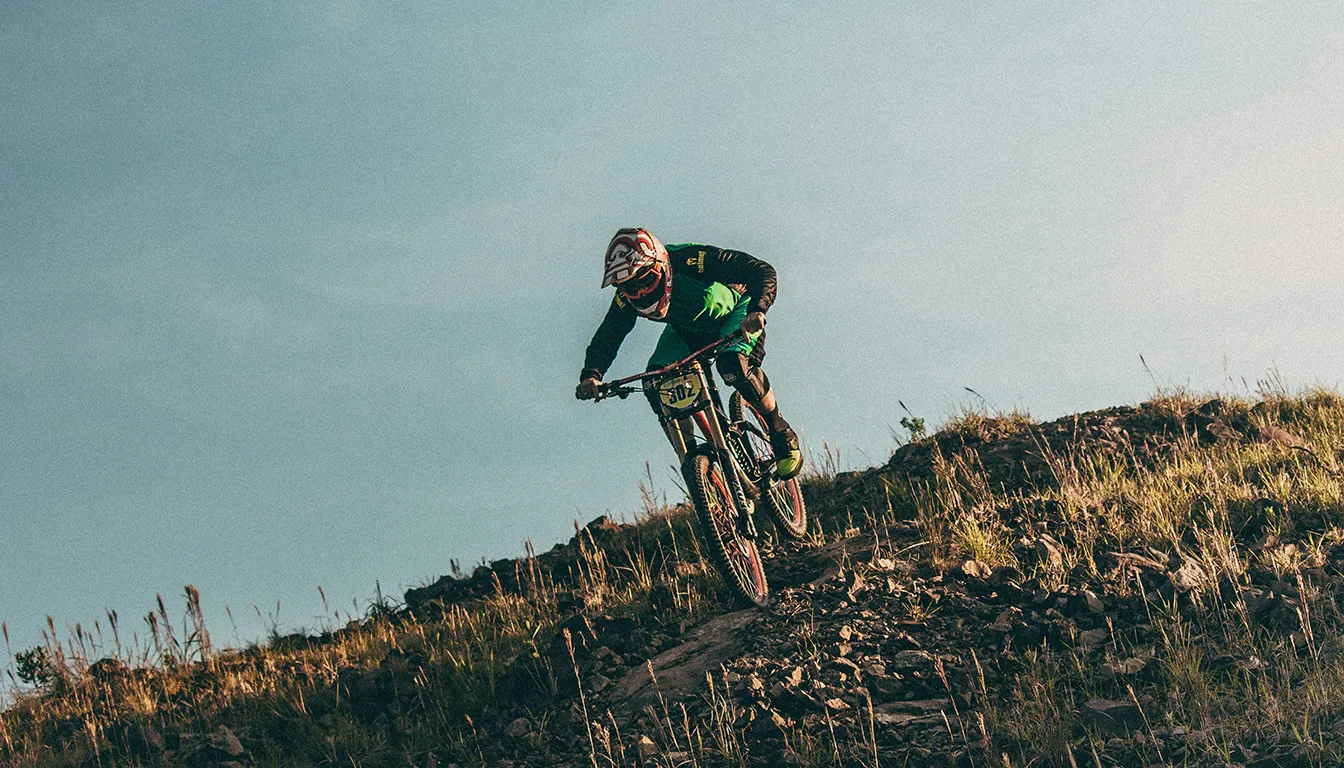

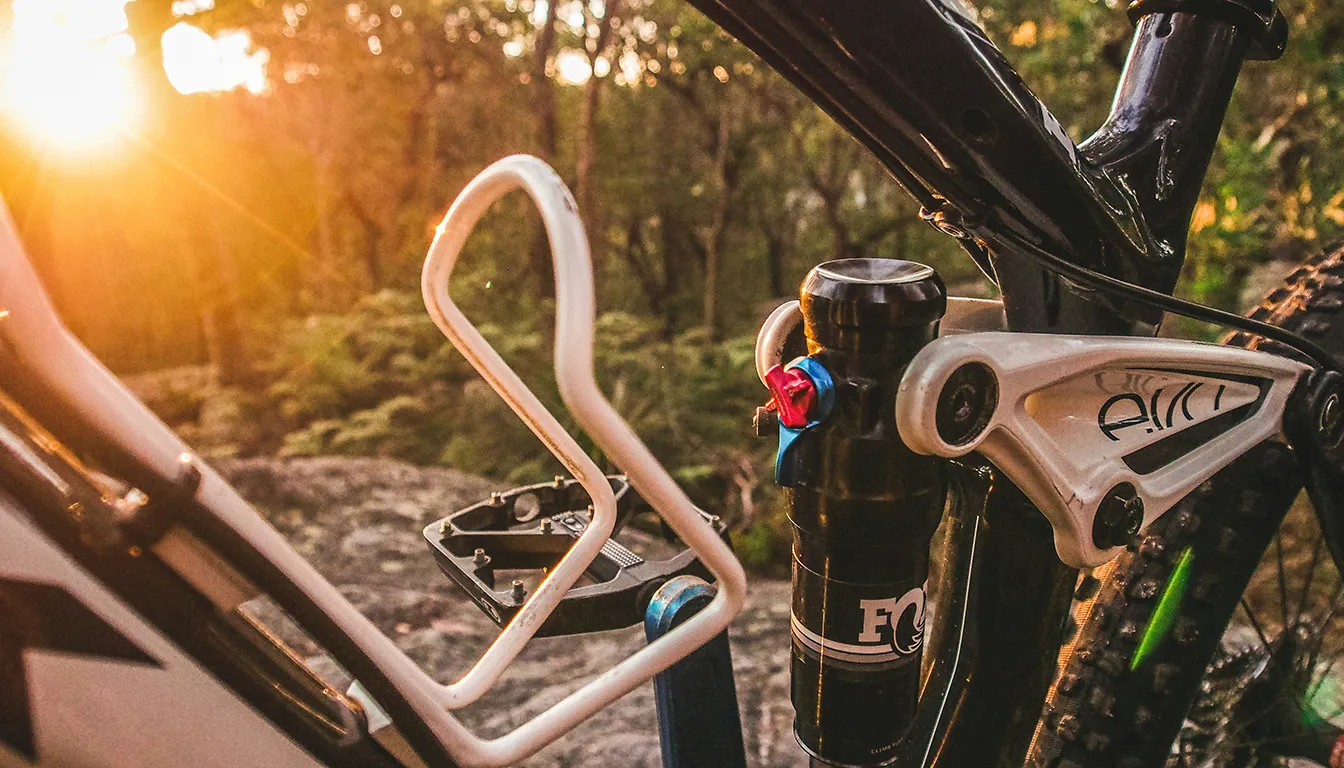
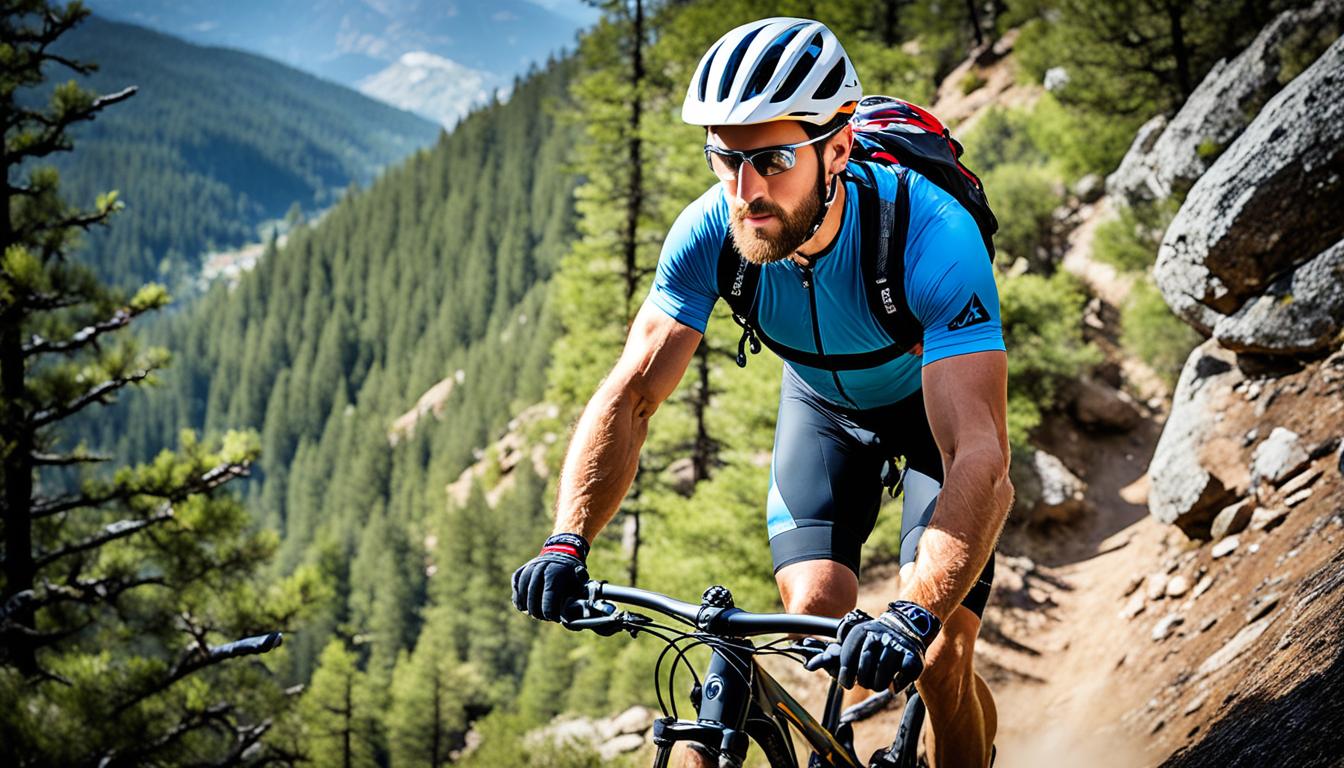
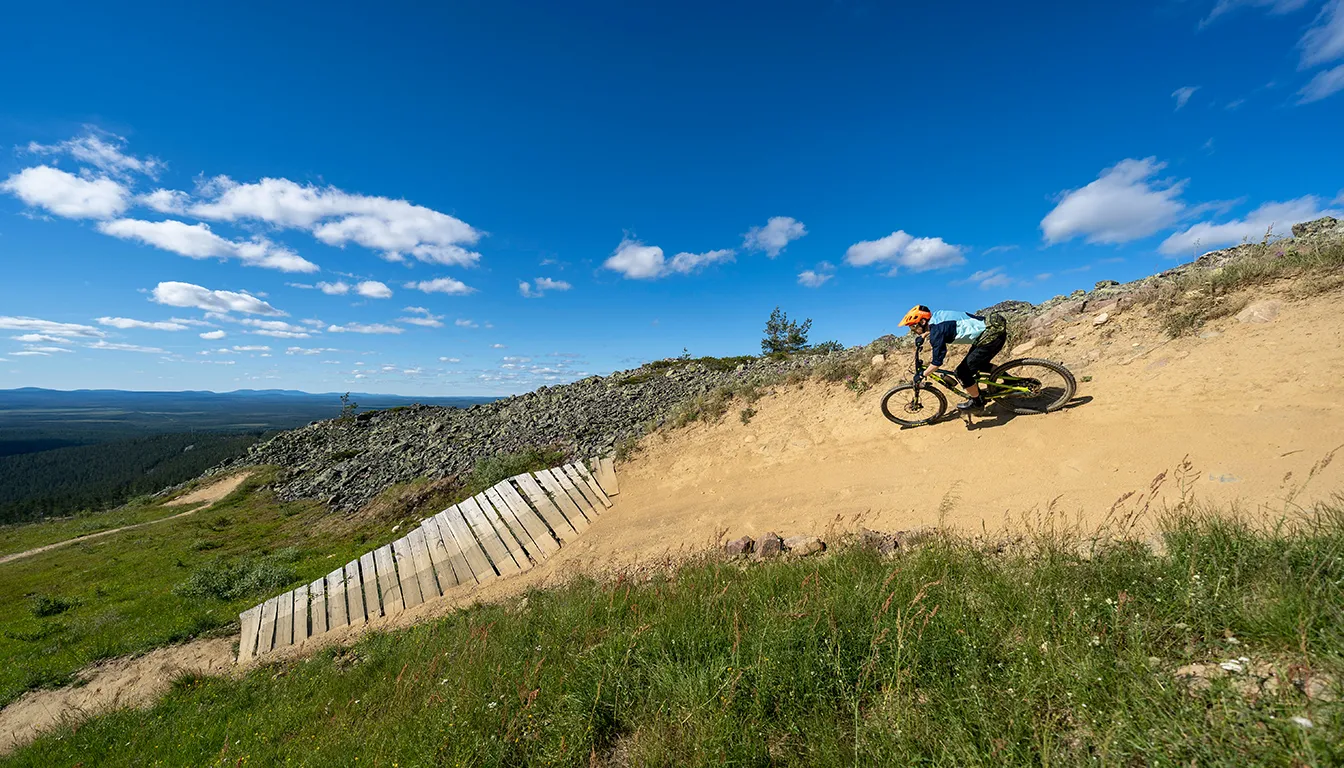
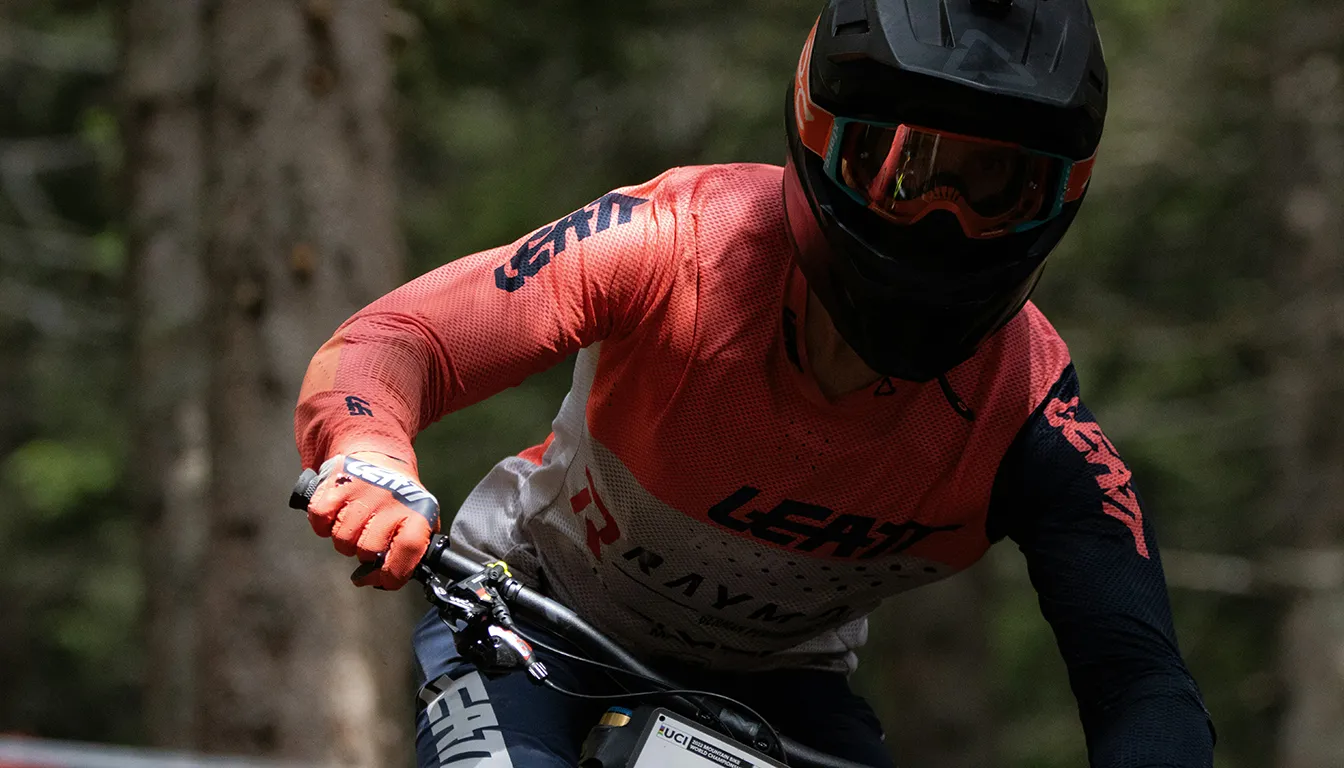
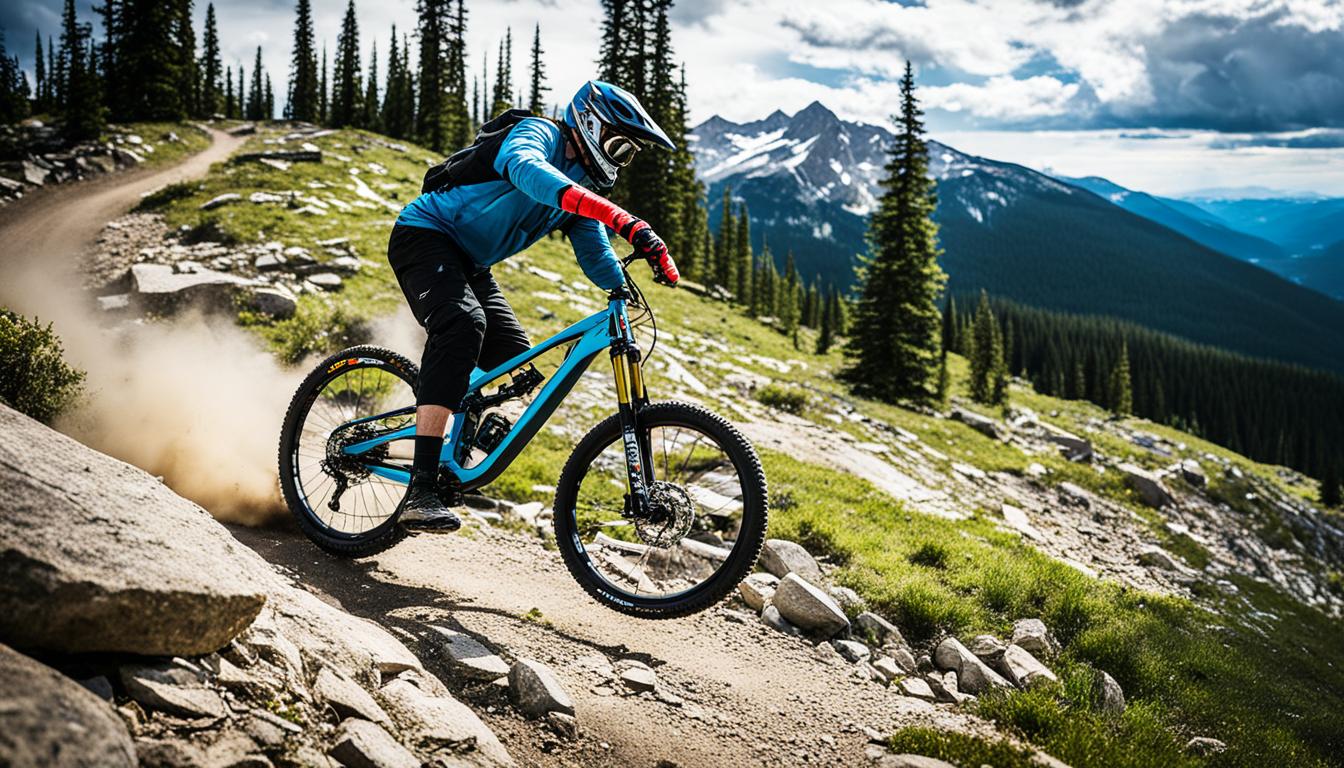
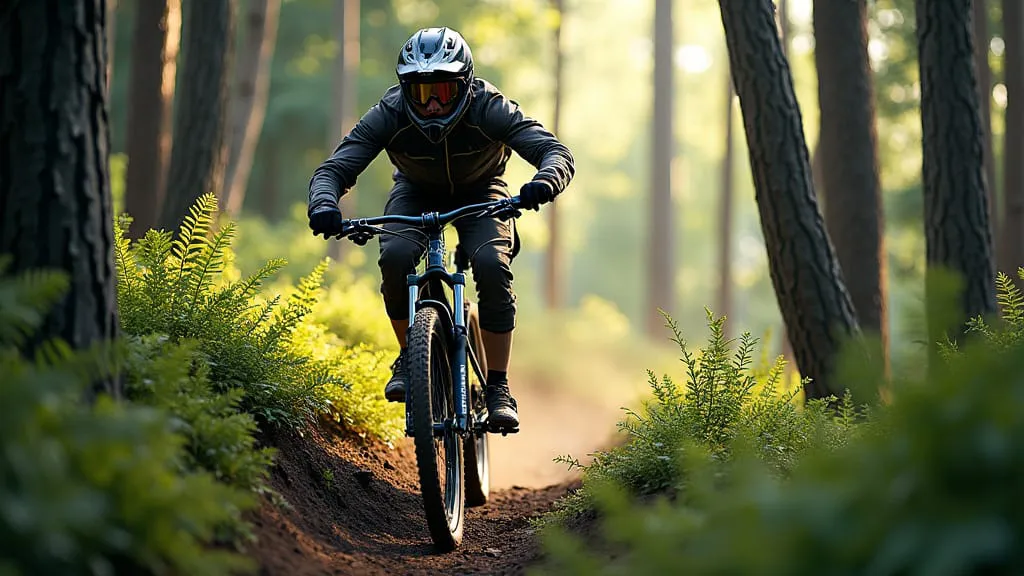
One thought on “What Are the Best Tips for Downhill Mountain Biking?”